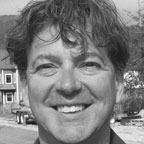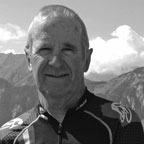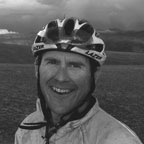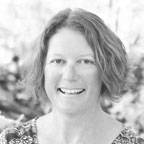It is election season in Crested Butte and we have a race for Town Council. Between now and the end of October, the Crested Butte News will be asking council candidates to answer questions related to issues in the community. We are asking that they keep their answers to no more than 600 words total. If you have a question you want us to ask them, send it to editorial@crestedbuttenews.com.
The News will also be sponsoring a Candidates Forum on Sunday, October 20 at the Crested Butte Center for the Arts. We will begin the questioning at 6 p.m. and expect the event to last between 90 minutes and two hours.
Ballots will be mailed out by October 18 and must be returned by November 5.
—Mark Reaman
Jim Schmidt
Mayoral candidate
Occupation: Driver for Alpine Express.
Years in the valley: 43.
Why are you running for Crested Butte mayor? I bring experience and institutional knowledge to the office of mayor at a time when there will be many fresh faces on council. I look forward to the blending of new ideas with the parameters the town has set over the years.
What do you see as the number one issue facing the Town Council right now? The number one issue is affordable/workforce housing. The town has 27 units under construction plus the three units the Fire District is building. We will have more than 24 percent of the living units in town with a deed restriction for workforce housing. We need to continue to work with our partners in the valley, especially Mt. Crested Butte to produce more opportunities for workers to find housing.
Favorite month in Crested Butte: My favorite month in Crested Butte is June. It’s usually not too busy and the weather is spectacular (though this September has been great).
Favorite candidate running for president right now: My favorite candidate running for president is Pete Buttigieg. He is very articulate. He is not one for hyperbole. He has an incredible background and, what can I say, he is a mayor.
Favorite musician or group: I’m an old guy. I grew up on the Beatles and the Rolling Stones. But give me some Eric Clapton anytime!
Will Dujardin
Council candidate
Occupation: Crested Butte Town Council 2017–Present, Head Freeride Coach CBMST, Mountain Bike Coach CBMST, fill-in server/painter/events, Badog Alley volunteer coordinator.
Years in the valley: 11.
Why are you running for Crested Butte Town Council? Two years ago I ran for Town Council on a topical level because I was frustrated with slow action taken by council on STRs and I was encouraged by friends and family to get involved in community I care about in a way that I was capable of affecting change. On a deeper level, I think I ran because it didn’t take long for me to care enough about this community through various work, adventures and volunteering to believe we are capable of truly shaping the future of Crested Butte in a way that connects to ourselves and why we live here to political action.
I am looking to continue my work on Town Council because it has felt like we have been going full send across so many important issues that matter to our community; we are still trying to get a grip on affordable housing, climate action, community health, public lands, tourism and even the reckless commodification of our town character so I hope this community trusts I can keep working for its constituents in these areas preserving our community values and way of life.
What do you see as the number one issue facing the council right now? Two years later I still see creating affordable housing solutions as the number one issue facing the Town Council right now. I do not take our progress in the last two years for granted, developing Block 76 is putting people in housing and the business partnerships in Phase 2 are pioneering an affordable housing tool, but we still need to take more action creating rental housing and affordable ownership opportunities while continuing to protect existing housing by increasing the percentage of deed-restricted homes in town.
I believe we are still playing catch-up since losing a bunch of housing to short-term rentals and we can’t be afraid to look at density in our future projects as a way to accomplish our affordable housing goals and push for more resource efficiency in regards to our Climate Action Plan efforts.
Affordable housing ties so many parts of community together from our mental health to our businesses and our community values. It feels a little funny when we as a community can figure out how to market this valley to the rest of the world and offer amazing experiences in the Rocky Mountains, but can’t figure out how to take decisive action to protect the community members that help run this town and make Crested Butte what it is. It is going to take thoughtful development of our scarce resources and implementing creative solutions through public and private enterprise to make more than a dent in the affordable housing crisis.
Favorite month in Crested Butte: Mayuary, I love letting seasonal confusion dictate which recreational activity is called upon for the day, whether skiing, mountain biking, river stuff, screenholes, books, or bench-sitting.
Favorite candidate running for president right now: A Warren/Sanders combo would align the most with my political beliefs. I was a Bernie Sanders delegate at the Colorado Democratic State Convention in 2016 representing our Gunnison County Democrats. I think the issues and ideals he has been fighting for throughout his career are mainstream Democratic priorities at the present. Elizabeth Warren is one of the smartest presidential candidates I have ever seen and her record in the Senate fighting against big business is something to be proud of. For me it’s either of these two and then any Democrat before Trump.
Favorite musician or group: Been on a Lizzo / Slayer / Tool / A Tribe Called Quest / Hall and Oates / Logic kick for a bit.
 Candice Bradley
Candice Bradley
Council candidate
Occupation: Business owner, tattoo artist.
Years in the valley: Five years and 5 months.
Why are you running for Crested Butte Town Council? I am running for Crested Butte Town Council because I think it’s important to maintain an open and accepting community. I have made it my goal while serving on Town Council to seek out those who may have differing views or ideas and hear their side of the issues.
What do you see as the number one issue facing Town Council right now? When I have asked people what they think the biggest issue is in Crested Butte right now, they often say housing. I agree that the lack of rental housing is a major issue, but I also see a larger darkness on the edge of town. The housing crisis has made severe impacts on all aspects of the community, businesses possibly being the most visible. Combining housing needs with increasing property taxes, short-term rentals, the purchase of the ski area and healthcare needs. I think that developing a plan to financially prepare for a change in our economy, the diverse needs of the people in our community and environmental sustainability are key to the success of the community. In short, I believe the number one issue facing Town Council is strategic planning for the future needs of this community.
Favorite month in Crested Butte: June.
Favorite candidate running for president right now: I don’t currently have a favorite candidate running for president of The United States. I am interested in a couple Democratic candidates and need more time to decide.
Favorite musician or group: Currently, my favorite band is Lightning Dust.
 Mallika Magner
Mallika Magner
Council candidate
Occupation: Attorney with a local practice specializing in land use, municipal representation, commercial transactions, estate planning and homeowners associations.
Years in the valley: I moved to Crested Butte in 1995, left in 2006 to spend time in India and returned full-time in 2017 (with a name change from Laura to Mallika).
Why are you running for Crested Butte Town Council? To continue to put my skills, experience, deep ties and love for our community in service to the Town. I want to listen and hear the concerns and issues facing those who live here, and represent the entire community.
What do you see as the number one issue facing Town Council right now? Helping maintain our core values in this rapidly changing community, including providing housing for our workforce, making decisions that support local businesses and residents, encouraging our bike and pedestrian lifestyle, addressing climate change and making responsible fiscal decisions.
Favorite month in Crested Butte: September.
Favorite candidate running for president right now: Elizabeth Warren.
Favorite musician or group: The Clash.
 Monique “Mona” Merrill
Monique “Mona” Merrill
Council candidate
Occupation: Owner of Amazing Grace, an old-school natural foods café in Breckenridge. Mother of a 6-year-old at CBCS. Board member at the Children’s Trailhead Museum.
Years in the valley: Our family purchased our home by the Nordic Center 10 years ago and our daughter started at Stepping Stones five years ago. I have been coming to Crested Butte since 1993, racing the Alley Loop, the Grand Traverse, the NORBA bike races and numerous other grassroots events.
Why are you running for Crested Butte Town Council? I love Crested Butte and want to keep it community based. I decided to raise my daughter here, and our family plans to be part of Crested Butte forever. I am a small town gal and what made me fall in love with Crested Butte is the true face-to-face community of locals that live and thrive here. Like many of us, I am troubled by the rapid changes happening to our town—many of which threaten the very things we love most about Crested Butte.
I lived in Breckenridge for 20 years and witnessed its transformation from a small ski town to a mini city. I watched as the town gentrified and the locals cleared out. I feel a sense of urgency and duty to stop these losses from happening here in every way that we can.
I think the grassroots non-profits, local businesses on Elk and local families living in town are imperative to the health of the community. What Crested Butte has is special: CBMBA, CBCC, Mountain Roots, Children’s Trailhead Museum, School of Dance, the Nordic Center… just to name a few. I hear a lot changed before I got here but there is still so much community and core left that can be preserved, especially compared to other ski towns. I believe my experience running a small business and serving on Open Space in a ski town purchased and developed by Vail Resorts will provide useful insight to town Council.
What do you see as the number one issue facing Town Council right now? How do we manage growth in such a way that it doesn’t displace locals or our grassroots vibe and leave us with empty town syndrome? How do we manage growth as it affects our backcountry crowding and local trails? My preference would be to see zero growth, but I realize more visitors and growth are inevitable and help support local families, bring in tax dollars and create jobs. Where we must accept it, how can we minimize the impact and maximize the benefits? I commend town on their five-year affordable housing plan, taxation on STRs and long-term deed restrictions. On council, I want to make sure we follow through with implementation of the five-year plan, add to our open space, improve collaboration with the county and increase funding where possible—finding ways to have visitors and second homeowners pay what it takes to preserve the town we all love.
Favorite month in Crested Butte: September… No—every month! I go on trails and in the backcountry almost every day so I know where to hide.
Favorite candidate running for president right now: Elizabeth Warren.
Favorite musician or group: Xavier Rudd. He sings about saving the earth and keeping it real. He turned down the Belly Up and rocked the house at the Center for the Arts last month and I ran into him at Mountain Earth. Love it.
 Laura Mitchell
Laura Mitchell
Council candidate
Occupation: Ortho-Bionomy practitioner, property manager, Frank’s Deli star sandwich maker, Crested Butte Town Council member.
Years in the valley: This will be my 33rd ski season in the valley.
Why are you running for Crested Butte Town Council? There are a few projects that I have helped get started that I would like to see to completion. I have some history as a “mid-timer” that adds some depth to the council.
What do you see as the number one issue facing the Town Council right now? Brush Creek development.
Favorite month in Crested Butte: October.
Favorite candidate running for president right now: Marianne Williamson.
Favorite musician or group: Leftover Salmon.
Anne Moore
Council candidate
Occupation: Self-employed professional cleaner.
Years in the valley: My parents picked this place to raise me—I chose it of my own volition as an adult. As result, I have spent the vast majority of my 36 years on this planet living in the most beautiful valley on Earth.
Why are you running for Crested Butte Town Council?
Through many years of volunteering in order to further positively progress our community, I feel it is time for a more direct, hands-on approach. Aligned with my mentality for positively impacting the Crested Butte community, the Great Muhammad Ali encouraged, “Service to others is your rent for your space on this planet,” and I am here to serve the people.
What do you see as the number one issue facing Town Council right now? Affordable rental housing.
Favorite month in Crested Butte: I thrive in November and May. I love and value the breathing room and the space for everyone to be themselves.
Favorite candidate running for president right now: Bernie Sanders has my full support. Furthermore, I admire Marianne Williamson for helping to expand the conversation. To have a presidential candidate discussing the deeper matters of our souls and responsibilities to Earth is exactly what we need. The bigger the conversation, the more informed and conscious the results are.
Favorite musician or group: The Gorillaz.
 The Crested Butte News Serving the Gunnison Valley since 1999
The Crested Butte News Serving the Gunnison Valley since 1999










